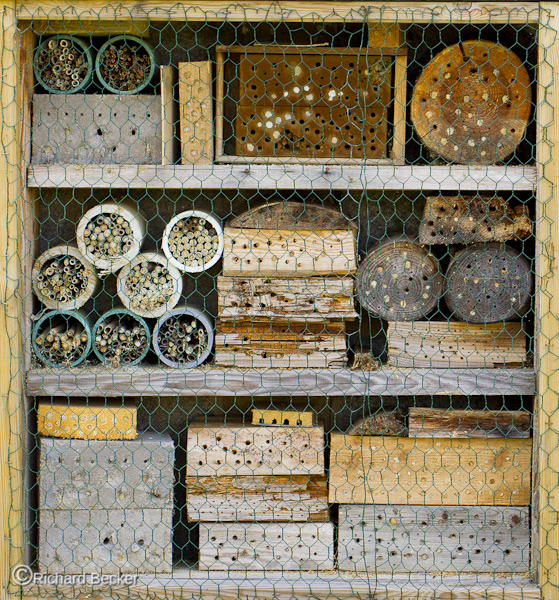01 Jul 2014
A couple of years ago I brought all my cardboard bee tubes, wooden blocks, and the like, together into a new construction the ‘Bee Hotel’. Previously they had been scattered around the garden, but putting them all together on a south-east facing wall has made observing them much easier.
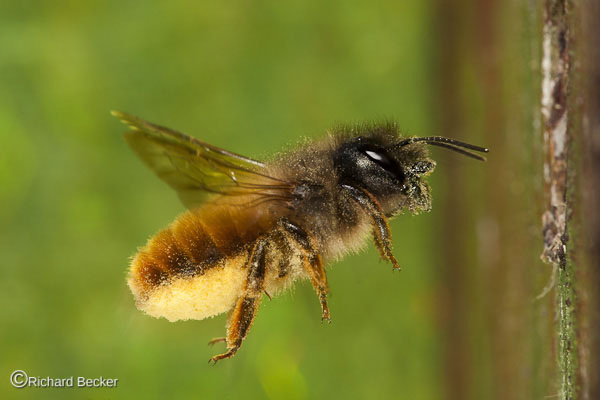
And being able to see what is happening has made photographing what is going on a possibility, if not always successful. In addition to the usual Osmia bicornis sometimes known as the Red Mason Bee the tubes and blocks are attracting a variety of other species, Osmia leiana is another widespread bee, but the cuckoo bee Stelis phaeoptera is now rare but we see them regularly. The leaf-cutter bee Megachile centuncularis is also present as is her cuckoo Coelioxys inermis.
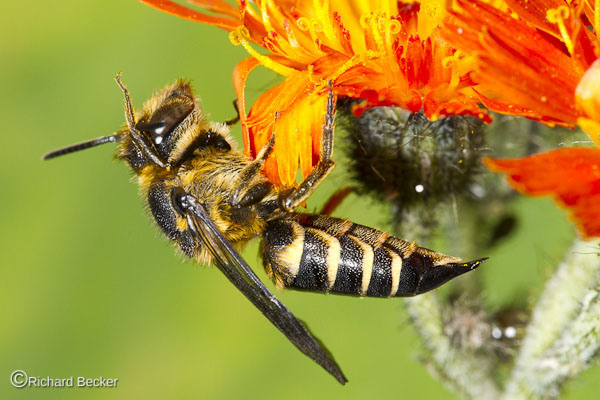
In addition to the bees several wasps are using the nesting holes, Ancistrocerus bringing in caterpillars, Passaloecus stocking her nests with dozens of aphids, and Trypoxylon flying back with small spiders that she packs into the nest as food for her larvae.
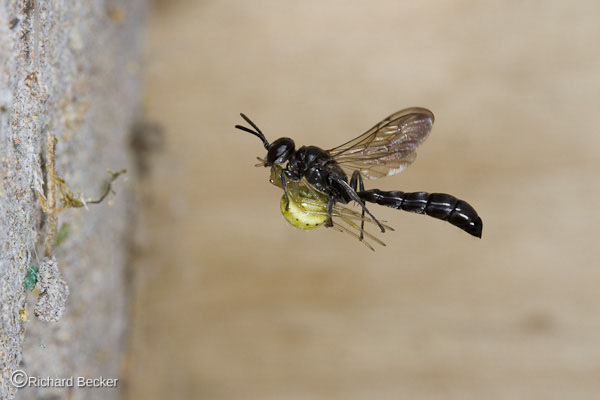
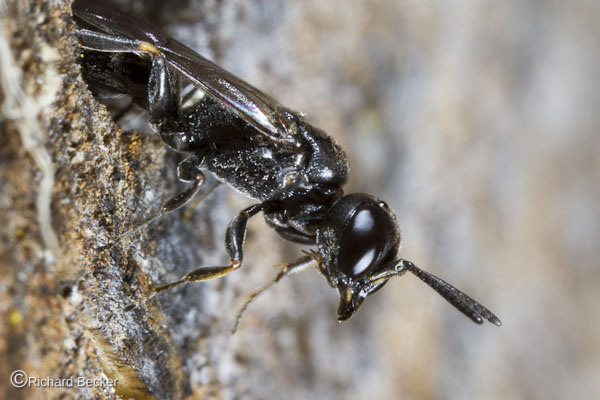
All this activity also attracts a variety of parasites, several ichneumons, and a lot of Ruby-tailed wasps Chrysis sp. most of them probably Chrysis ignita.
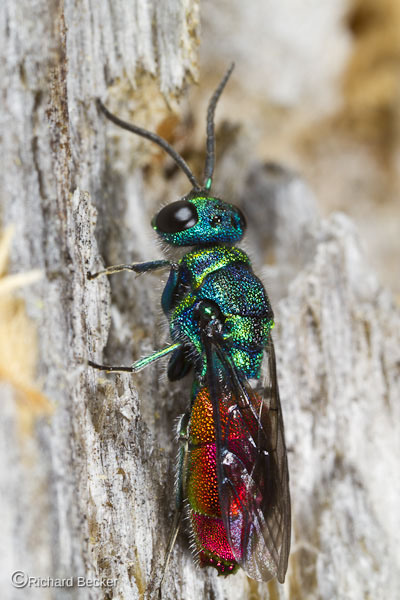
The hotel has been so successful that I have had to build another alongside to stop the fighting that was going on over nest sites, and I had already built one to go in our fruit orchard to help with pollination. The shelves contain a mix of bought bee tubes, canes and plant stems, wooden blocks and oasis blocks. All are used by one or more species. The wooden blocks are all off-cuts of untreated wood (vitally important) with holes ranging from 1.5mm to 10mm of depths as long as the drill bit and wood will allow (100 to 150mm). The oasis seems to act like very rotten wood, I push a pencil or log nail in to make a hole and the bee (Osmia bicornis especially) will then excavate a chamber to build her mud cells in.
It is important never to be tempted to clean out the tubes, the bees and wasps are very efficient at cleaning out old nesting material anyway, but some species, Osmia leiana in particular will often over-winter twice before emerging. Cleaning could destroy a whole generation. I have found the 25mm netting cover vital to keep out birds, woodpeckers especially, and squirrels. 25mm net lets bees fly through but keeps out most small birds though some still squeeze through.
